Introduction: The Nature of Science and Physics
2 Physics: An Introduction
Learning Objectives
- Explain the difference between a principle and a law.
- Explain the difference between a model and a theory.

The physical world is filled with complexity. Each day, we observe countless natural events: the rhythmic beat of a heart, the flow of blood through arteries, the fluttering of leaves in the wind, or the precise movement of muscles during walking. Humanity’s deep curiosity has led us to explore and document everything from the structure of atoms to the formation of galaxies. We've studied everything from the electrical signals in neurons to the expansion of the universe. And through centuries of investigation, scientists have discovered something remarkable: despite the immense variety we see, a relatively small set of fundamental laws can describe how nature works.
This hidden simplicity—the idea that a few core principles govern many different phenomena—is what makes science, and physics in particular, so fascinating. Physics helps us recognize patterns and relationships beneath the surface of everyday events. For instance, consider what a bag of chips and a defibrillator have in common. Both store energy, and both rely on the principle of energy conservation—the idea that energy cannot be created or destroyed, only transformed. Whether we’re talking about food energy being converted into movement, or a medical device delivering electrical energy to restart a heart, the same physical principle applies.
This kind of connection is central to physics. Instead of memorizing isolated facts, you’ll begin to see how different processes—from muscle contractions to heat transfer in a feverish patient—are unified by the same set of physical laws. These laws help explain how the human body works, how medical instruments function, and how energy and forces interact across all areas of science.
As you move through this course, you’ll not only learn important physics concepts—you’ll also develop critical thinking and problem-solving skills that will serve you well in healthcare and beyond. Physics trains you to approach problems logically, analyze data carefully, and understand cause-and-effect relationships in complex systems—skills that are vital in diagnosing conditions, evaluating treatment options, and understanding the mechanics of the human body.
In this first module, we’ll define what physics is, explore its connections to other disciplines (especially those in the health sciences), and discuss the nature of physical laws—universal principles that help us make sense of the natural world. Understanding these foundations will prepare you to dive into the study of physics with confidence and curiosity.
Science and the Realm of Physics
Science is a systematic approach to understanding the natural world. It involves discovering patterns, formulating explanations, and expressing general truths in the form of scientific theories and laws. Physics, in particular, seeks to describe how matter and energy interact in space and time. It provides the foundation for understanding a wide range of phenomena—from microscopic events inside the human body to large-scale motions across the universe.
Physics aims to explain how the world works, whether it's the movement of ions across cell membranes, the flow of blood in vessels, or the motion of machines. In fact, nearly every aspect of modern life—and of medical technology—can be described using the laws of physics.
One striking example is the smartphone like the one pictured in Figure 2.2..
Smartphones, like many other technologies, rely on fundamental physics concepts such as electricity, magnetism, wave propagation, and energy transfer. The circuits inside a smartphone channel electrical currents based on well-understood physical laws. GPS systems, which are standard in mobile phones, apply physics equations involving speed, distance, and time to calculate your location and how long it will take to get somewhere.
While this may seem unrelated to health care, similar physics principles underlie many medical devices. For example, a cardiac monitor processes electrical signals in the body in much the same way a phone processes electrical signals through its circuits. Haptic feedback in smartphones—using tiny mechanical actuators to produce vibration—is also used in wearable medical devices to alert patients or caregivers.
Whether it’s understanding how a defibrillator works, how light is used in pulse oximeters, or how forces affect joints during rehabilitation, physics offers the framework for both explanation and innovation in health care. This course will help you connect these principles to your future clinical practice and technological environment.
Applications of Physics in the Health and Life Sciences
You don’t have to be a physicist to benefit from physics. In fact, many people use physics concepts daily—often without even realizing it. For students preparing for careers in healthcare, a basic understanding of physics can help explain the technology and physical processes you’ll encounter in clinical settings, as well as improve your decision-making when evaluating treatment plans or using medical devices.
For example, physics explains how a microwave oven heats food, why metal objects should not be placed inside, and how electromagnetic fields might interfere with pacemakers. (See Figure 2.3 and Figure 2.4) It helps us understand how radiation interacts with tissues, enabling healthcare professionals to assess the benefits and risks of X-rays or CT scans. It also explains everyday observations: a black car heats up more than a white one because dark colors absorb more thermal radiation—a concept that's just as relevant when thinking about heat loss in burn victims or temperature control in incubators.
Physics is foundational to many other scientific disciplines. Chemistry, which explores how atoms and molecules interact, is built on physical principles at the atomic level. Anatomy and physiology—though biological in nature—rely on physics to explain blood flow, muscle contraction, hearing, and vision. Many aspects of physical therapy, exercise science, and biomedical engineering are based on mechanical and electrical principles. Even the electrical signals that transmit information through the nervous system depend on an understanding of voltage, current, and resistance.
Physics also plays a direct role in medical technologies and diagnostics:
-
On the microscopic scale, physics helps us understand how molecules move across cell membranes, how ion channels work, and how pressure affects cells and tissues.
-
On the macroscopic scale, it describes how the human body generates heat and performs mechanical work—how your muscles lift weight, how your lungs exchange gases, and how your heart pumps blood.
Figure 2.5 and Figure 2.6 show how physics relates to biological systems, including cell membrane dynamics and blood flow through vessels.
In medical diagnostics, physics enables life-saving technologies like:
-
X-rays, which rely on the interaction of ionizing radiation with tissue;
-
MRI (Magnetic Resonance Imaging), which uses magnetic fields and radio waves to visualize soft tissues;
-
Ultrasound, which uses high-frequency sound waves to create images and measure blood flow;
-
ECG/EKG and EEG, which monitor electrical signals in the heart and brain.
Physics is also involved in therapy. For instance:
-
Radiation therapy uses precisely calculated doses of ionizing radiation to target and destroy cancer cells.
-
Laser surgery and phototherapy rely on optics and light-matter interactions.
Even sensory experiences can be explained with physics—how your ears detect sound from a stethoscope, how your eyes perceive color, or how laser communication devices transmit patient data wirelessly.
You don’t need to study all of these applications in detail. What’s most important is learning the core principles of physics and developing the analytical skills to apply them in meaningful ways. Physics trains you to think critically, solve problems logically, and understand the deeper mechanisms behind the tools and systems you’ll use in your healthcare career. It’s also the most “universal” science—meaning that learning physics now will help you better understand biology, chemistry, and the technologies you'll encounter in your future clinical work.
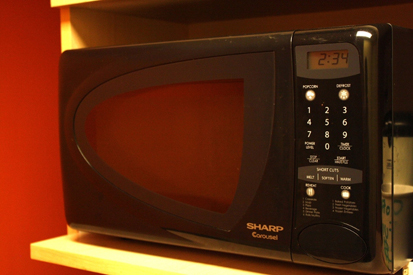
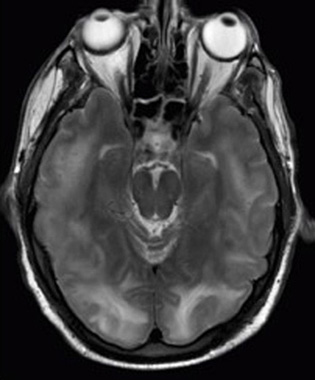
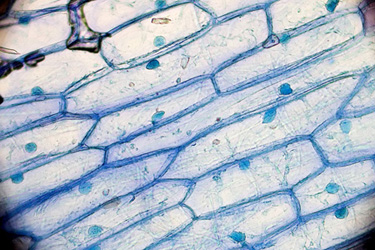
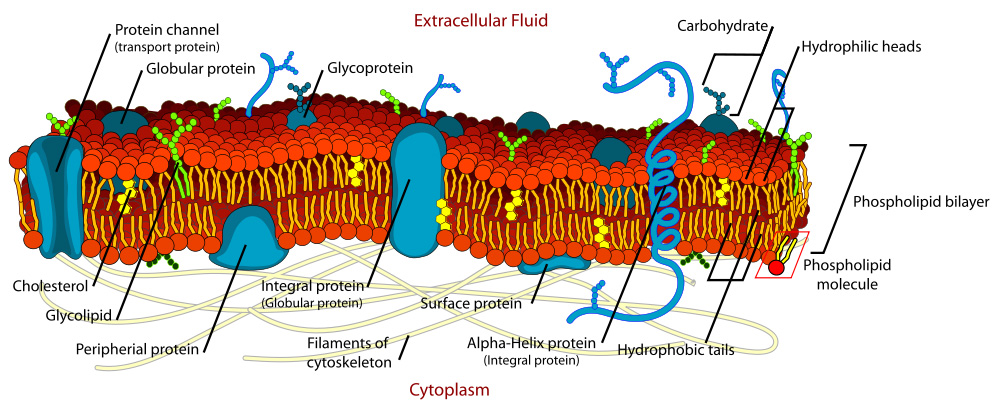
Models, Theories, and Laws; The Role of Experimentation
In science, we seek to describe the universe as it truly is—not as we imagine it to be. The laws of nature are concise, evidence-based descriptions of how the world behaves. These laws are not invented by humans; rather, they are discovered through careful observation and experimentation. Whether we’re studying blood flow in the circulatory system or radiation used in cancer therapy, physics laws help us make sense of the natural processes that underlie health and disease.
The process of scientific discovery is a human endeavor—full of curiosity, creativity, testing, failure, and breakthroughs. It is this process that has led to many of the medical tools and life-saving treatments we have today (See Figure 2.7 and Figure 2.8).
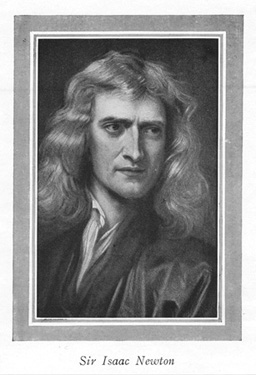

Scientific progress begins with observation—noticing patterns in nature and asking questions about them. For example, a physician might notice that patients with certain symptoms tend to respond better to a specific treatment. Over time, researchers design experiments, collect data, and develop ideas to explain what’s happening. These explanations may take the form of models, theories, or laws.
-
A model is a simplified representation of something we can’t directly observe. For instance, we can't see the structure of atoms with our eyes, but we can use models (like the planetary model of the atom) to explain how electrons behave and how atoms emit light (See Figure 2.9.).
-
A theory is a well-supported explanation for observed patterns in nature. It is tested and refined over time by many scientists. For example, the kinetic theory of gases helps explain how oxygen moves into the bloodstream or how anesthetic gases behave during surgery.
-
A law is a concise statement describing a general pattern in nature, usually expressed mathematically. Newton’s second law, F = ma, is one such example—it helps describe how forces affect mass and acceleration, whether you’re lifting a limb during physical therapy or calculating the force applied by a surgical tool.
Theories and laws are both supported by evidence, but they serve different roles. A law summarizes what happens, while a theory explains why it happens. Both guide our understanding and help predict future outcomes.
Some statements that apply to narrower situations are called principles, like Pascal’s Principle, which is used in understanding intravenous fluid dynamics and how pressure is transmitted in a hydraulic system.
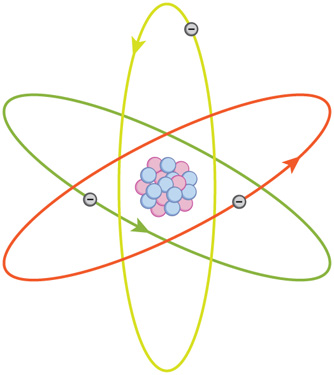
Experimentation and the Limits of Science
Scientific models, theories, and laws are powerful tools—but they are not perfect. They evolve with new evidence. Sometimes, a model will lead to new predictions or discoveries. Other times, new experiments will challenge a theory, leading to its revision or even rejection.
This willingness to adapt is a strength of science. In physics and medicine alike, we must be open to changing our understanding when high-quality evidence shows a better explanation. For example, modern theories of disease transmission and immunity replaced outdated models that once blamed illness on “bad air.”
No law or theory can ever be known with complete certainty because we cannot test every possible scenario. Instead, scientists use the best available data and revise our models as needed. In this way, science—like medicine—is an ongoing process of discovery.
The Scientific Method
Scientists use a structured approach to explore questions and solve problems. This process is called the scientific method, and it applies just as well to medicine as to physics.
The scientific method typically follows these steps:
-
Observation – Notice a problem or pattern.
-
Question – Ask why it occurs.
-
Research – Review existing information.
-
Hypothesis – Form a testable explanation.
-
Experiment – Test the hypothesis with measurable outcomes.
-
Analysis – Interpret the data.
-
Conclusion – Decide whether the results support the hypothesis.
This method is used in everything from developing new drugs to improving hospital protocols. It can even be applied to everyday troubleshooting:
Example: Suppose your car won’t start.
Observation: The engine doesn’t turn over.
Hypothesis: The battery may be dead.
Test: Check the battery voltage or try jump-starting it.
Result: The car starts.
Conclusion: The dead battery was the problem.
In healthcare, this same process might guide how a nurse assesses a patient’s symptoms or how a physical therapist adjusts a rehabilitation plan based on patient response.
The Evolution of Natural Philosophy into Modern Physics
The study of nature has fascinated humanity for thousands of years. In ancient times, what we now call science—including biology, astronomy, medicine, mathematics, and physics—was all part of a broader field called natural philosophy. The word physics comes from the Greek physis, meaning "nature," and early thinkers like Aristotle studied everything from motion and anatomy to ethics and the stars. (See Figure 2.10, Figure 2.11, and Figure 2.12.)
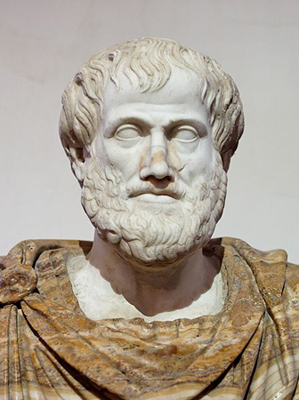
As knowledge expanded during the Renaissance and beyond, natural philosophy began splitting into specialized disciplines. Physics retained its role as the foundation—focused on understanding matter, energy, motion, and forces. These core ideas are essential not only for studying the universe but also for explaining how the human body works and how medical devices function.
From the Renaissance to the late 1800s, physics developed as what we now call classical physics. This includes Newton’s laws of motion, thermodynamics, wave behavior, and electromagnetism—all of which are vital for understanding health-related systems like blood circulation, ventilators, ultrasound, and ECGs. But at the dawn of the 20th century, scientists encountered phenomena that classical physics couldn’t explain—especially at very high speeds and on very small scales.
This gave rise to modern physics: a set of revolutionary ideas and mathematical models that describe the bizarre yet real behavior of matter and energy at extreme conditions.
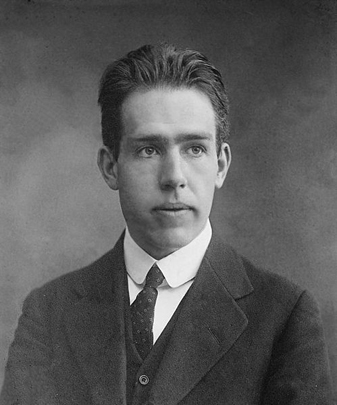
Although modern physics grabs headlines with concepts like black holes and quantum tunneling, classical physics still dominates in the healthcare environment. Why? Because it accurately describes most everyday conditions:
-
Objects moving at low speeds (like blood flow or limb motion),
-
Weak gravitational fields (such as Earth’s),
-
And systems large enough to be seen under a microscope (like organs and tissues).
-
Classical physics explains:
-
How forces affect joints and bones in physical therapy,
-
How energy is transferred during exercise or metabolism,
-
How pressure differences move air in and out of the lungs,
-
And how electrical circuits operate in medical devices like pacemakers.
-
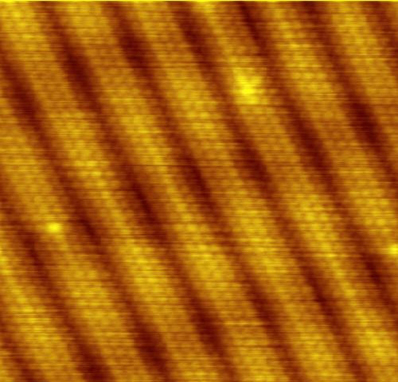
While classical physics provides the foundation, modern physics is essential for understanding today’s advanced medical technologies:
-
Quantum mechanics is used in MRI scanners, PET imaging, and the understanding of molecular interactions—especially in pharmaceuticals and radiation biology.
-
Relativity plays a role in technologies like GPS (which affects surgical navigation) and in calculating radiation doses from fast-moving particles in high-energy treatments.
Together, quantum mechanics and relativity form relativistic quantum mechanics, which describes very small particles moving at very high speeds—critical in particle physics and high-end cancer therapies.
But don’t worry: you don’t need advanced mathematics to understand these principles. This course uses algebra-based approaches that will allow you to explore many ideas in modern physics—including atomic models, radiation, and nuclear medicine—without needing calculus.
Why Start with Classical Physics?
Even though modern physics is incredibly powerful, we begin this course with classical physics for two reasons:
-
It accurately describes most real-world conditions in medicine and biology.
-
It gives you the foundation needed to understand more complex ideas later on.
By learning classical physics first, you’ll build strong skills in problem-solving, reasoning, and real-world application. This will serve you well—whether you're assessing how mechanical forces affect a healing joint, setting up medical equipment, or evaluating the safety and effectiveness of diagnostic tools.
Check Your Understanding
A friend tells you he has learned about a new law of nature. What can you know about the information even before your friend describes the law? How would the information be different if your friend told you he had learned about a scientific theory rather than a law?
Without knowing the details of the law, you can still infer that the information your friend has learned conforms to the requirements of all laws of nature: it will be a concise description of the universe around us; a statement of the underlying rules that all natural processes follow. If the information had been a theory, you would be able to infer that the information will be a large-scale, broadly applicable generalization.
PhET Explorations: Equation Grapher
Learn about graphing polynomials. The shape of the curve changes as the constants are adjusted. View the curves for the individual terms (e.g. [latex]y=\mathrm{bx}[/latex]) to see how they add to generate the polynomial curve.
Summary
- Science seeks to discover and describe the underlying order and simplicity in nature.
- Physics is the most basic of the sciences, concerning itself with energy, matter, space and time, and their interactions.
- Scientific laws and theories express the general truths of nature and the body of knowledge they encompass. These laws of nature are rules that all natural processes appear to follow.
Conceptual Questions
- Models are particularly useful in relativity and quantum mechanics, where conditions are outside those normally encountered by humans. What is a model?
- How does a model differ from a theory?
- If two different theories describe experimental observations equally well, can one be said to be more valid than the other (assuming both use accepted rules of logic)?
- What determines the validity of a theory?
- Certain criteria must be satisfied if a measurement or observation is to be believed. Will the criteria necessarily be as strict for an expected result as for an unexpected result?
- Can the validity of a model be limited, or must it be universally valid? How does this compare to the required validity of a theory or a law?
- Classical physics is a good approximation to modern physics under certain circumstances. What are they?
- When is it necessary to use relativistic quantum mechanics?
- Can classical physics be used to accurately describe a satellite moving at a speed of 7500 m/s? Explain why or why not.
Glossary
- classical physics
- physics that was developed from the Renaissance to the end of the 19th century
- physics
- the science concerned with describing the interactions of energy, matter, space, and time; it is especially interested in what fundamental mechanisms underlie every phenomenon
- model
- representation of something that is often too difficult (or impossible) to display directly
- theory
- an explanation for patterns in nature that is supported by scientific evidence and verified multiple times by various groups of researchers
- law
- a description, using concise language or a mathematical formula, a generalized pattern in nature that is supported by scientific evidence and repeated experiments
- scientific method
- a method that typically begins with an observation and question that the scientist will research; next, the scientist typically performs some research about the topic and then devises a hypothesis; then, the scientist will test the hypothesis by performing an experiment; finally, the scientist analyzes the results of the experiment and draws a conclusion
- modern physics
- the study of relativity, quantum mechanics, or both
- relativity
- the study of objects moving at speeds greater than about 1% of the speed of light, or of objects being affected by a strong gravitational field
- quantum mechanics
- the study of objects smaller than can be seen with a microscope
representation of something that is often too difficult (or impossible) to display directly
an explanation for patterns in nature that is supported by scientific evidence and verified multiple times by various groups of researchers
a description, using concise language or a mathematical formula, a generalized pattern in nature that is supported by scientific evidence and repeated experiments
a method that typically begins with an observation and question that the scientist will research; next, the scientist typically performs some research about the topic and then devises a hypothesis; then, the scientist will test the hypothesis by performing an experiment; finally, the scientist analyzes the results of the experiment and draws a conclusion
physics that was developed from the Renaissance to the end of the 19th century
the study of relativity, quantum mechanics, or both
the study of objects smaller than can be seen with a microscope
the study of objects moving at speeds greater than about 1% of the speed of light, or of objects being affected by a strong gravitational field
the science concerned with describing the interactions of energy, matter, space, and time; it is especially interested in what fundamental mechanisms underlie every phenomenon

